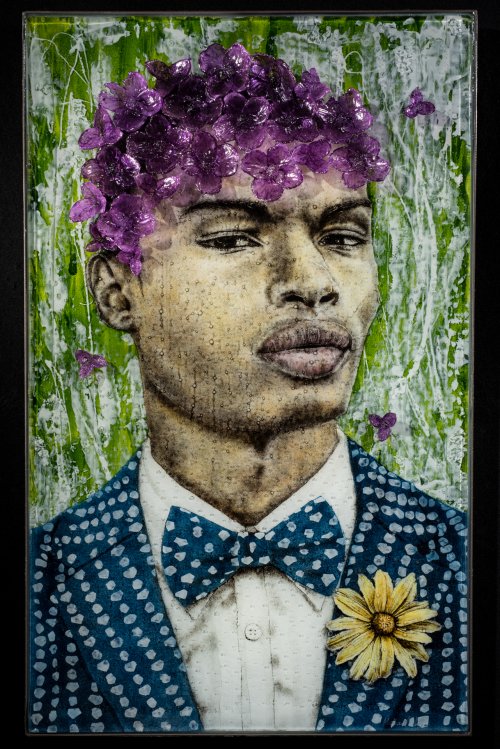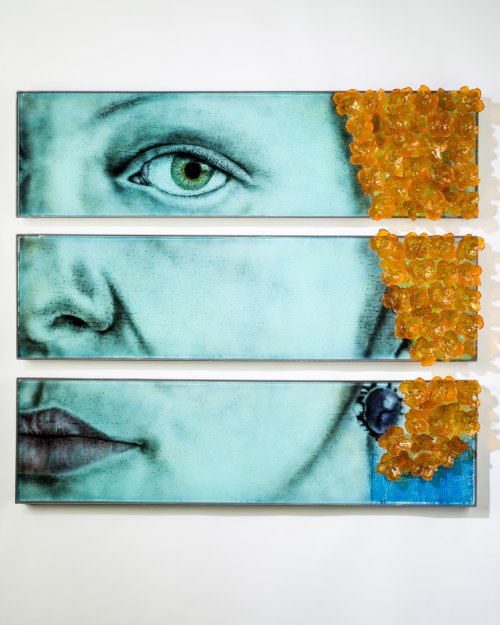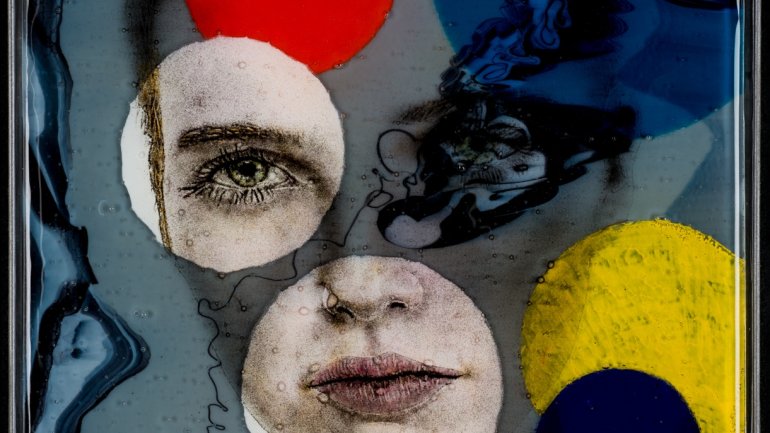Michael Janis' "Echoes of Leaves and Shadows"
Glass artist Michael Janis is preparing for a new solo show of his signature glass works and sculpture, opening September 16 at the Maurine Littleton Gallery in Janis’ home of Washington, DC. We caught up with the artist – between his time in the studio and his work as co-director of the Washington Glass School & Studio – to ask him a few questions about his show and what he’s doing to prepare.
What is your upcoming show and why is it important?
In the works for “Echoes of Leaves and Shadows” I have been examining aspects of dimension, media, and identity. I have been working with the technique of fusing with glass powder to create imagery, essentially “painting with glass on glass” for many years, balancing translucency, opacity, and transparency with color to achieve depth in the two-dimensional plane. Many of the works in the show integrate cast-glass elements – pulling the work out of the 2D plane. In exploring the inherent qualities of transparency and opacity of the medium and how they can inform my narrative, I’ve been mixing ceramic and glass in my sculpture and arranging my narrative imagery in ways that create new realities and surrealities.

Michael Janis, Casting a Long Shadow, 2015; cast and fused glass, glass powder imagery, steel, 35 x 22 x 4 in.
Pete DuvallHow do you split your attention between preparing your actual work, and the other details (promotion, technical details) around putting a show together?
Mulling about the logistics and schedules has occupied many of my waking thoughts since the gallery approached me about the show after the 2015 SOFA Chicago art fair. It works best for me stay focused on the details of the work and treat other aspects of the show as my mental escape during breaks in the studio.
You transitioned from architecture to glass work over a decade ago now. How does your experience come into play as you get ready for a new show like this?
As an architect, I was conditioned to think in multiple directions and have alternate options ready for the surprises that occur. One must be a jack of all trades and be able to multitask – quickly. And since the workload of the Washington Glass Studio is shared with the other directors – Tim Tate and Erwin Timmers – I have others whom I can rely on for advice and support.

Michael Janis, The Weight of Light, 2016; cast and fused glass, glass powder imagery, steel, 42 x 40 x 4 in.
Pete DuvallYou're bringing your work in some new directions for this show. What can you tell us about that?
The works in the show are a continuation of my glass frit [granulated glass] drawings that I have been working on for some time now. My artwork compositions are often arranged in such a way as to suggest a straightforward portrait, yet I employ various means to dissemble them – from cropping the images to blocking out faces with cast glass elements or color forms. This forces us to ask what and how does one define identity. The layering of elements and color reacts to perceptions of gender, culture, and time. I think of this process as a type of poetic invention, a method of evoking non-linear narratives that trigger multiple associations in the mind of the viewer.
What is your number one goal for this show and how is that affecting your preparation?
My work has been evolving. I have always been obsessive creating my work – and the process takes a lot of attention to detail. In the show, I have been using a bolder sense of color and my works have increased in scale, while also incorporating different mediums. In this exhibit I want all the work to feel interrelated and created with respect for the materials.
I include personal metaphors within the narratives of my work, and also make the imagery open enough for every viewer to connect with their own emotions. I know as the compositions are installed in the gallery, each piece creates new dialogue with another – but that is a concern for a later date. Right now, in the studio, I need to focus on getting the work done.

